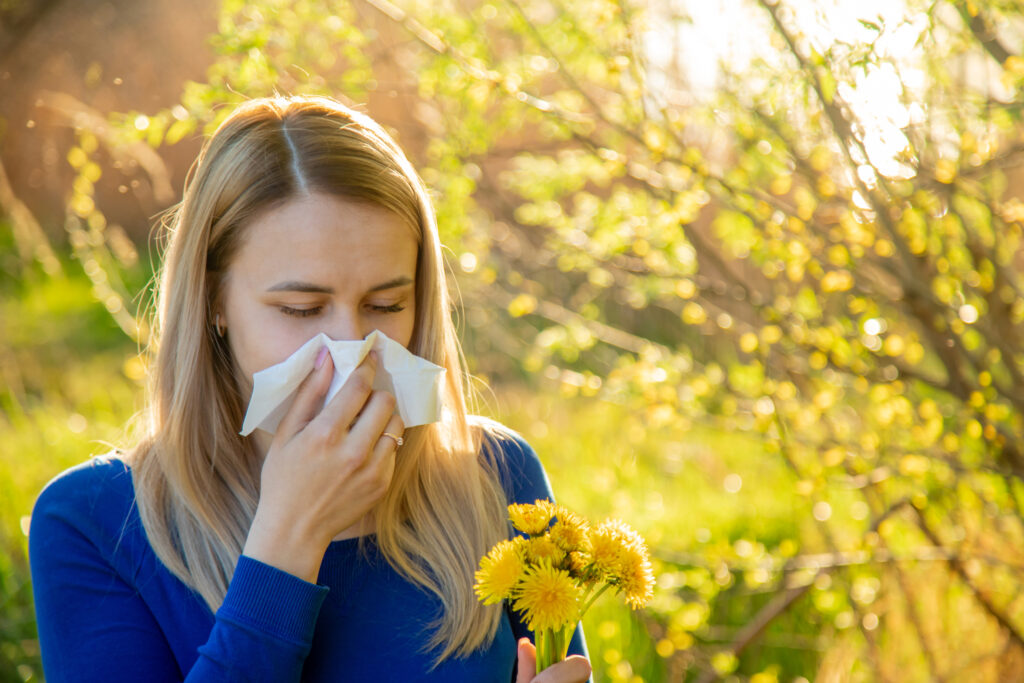As the seasons change, many people experience the discomfort of seasonal allergies, also known as hay fever or allergic rhinitis. These allergies can significantly impact your daily life, causing symptoms like sneezing, runny or stuffy nose, itchy eyes, and more. If you’re struggling with seasonal allergies, visiting your primary care physician can be a crucial step in managing your symptoms effectively.
Understanding Seasonal Allergies
Seasonal allergies occur when your immune system overreacts to allergens such as pollen, mold, or dust mites. These allergens are more prevalent during certain times of the year, like spring and fall. Common symptoms of seasonal allergies include:
- Sneezing
- Runny or stuffy nose
- Itchy eyes, nose, or throat
- Watery eyes
- Coughing
These symptoms can range from mild to severe and can interfere with your daily activities. Understanding the triggers and symptoms is the first step in managing seasonal allergies.
Allergy Season in Arizona
Arizona’s unique climate means that allergy season can be a year-round challenge. The warm weather allows different plants to bloom in every season, leading to continuous exposure to allergens.
Here’s a breakdown of what to expect:
- Spring (February to June): This is one of the worst times for allergy sufferers in Arizona. High pollen counts from trees like ash, mesquite, mulberry, cottonwood, oak, and olive, combined with windy conditions, can aggravate symptoms.
- Summer: Grass and weed pollen are common allergens during the summer months.
- Fall (September to late November): Another peak season for allergies, with ragweed, Russian thistle, and grass allergens being prevalent.
- Winter: Juniper trees can cause issues during the winter months.
Because of the mild winters, plants can bloom earlier and longer, extending the allergy season. This makes it essential for Arizona residents to have a robust plan for managing their allergies year-round.
Allergy Season in Central and Southern California
California’s diverse climate means that allergy seasons can vary significantly across the state. Here’s what you can expect in central and southern California:
- Central California: In areas like the Bay Area and Central Valley, tree pollen peaks from March to May, grass pollen is prevalent in late spring and summer, and weed pollen, such as ragweed, peaks from August to October. Coastal areas may experience longer pollen presence due to higher humidity levels.
- Southern California: The warm climate in southern California extends the pollen season nearly year-round. Tree pollen starts as early as February and peaks in spring, grass pollen continues from April through September and weed pollen peaks from August to October. Milder winters allow for some year-round pollen presence.
Understanding the specific allergens and peak seasons in your area can help you better manage your symptoms and plan your activities accordingly.
The Role of Your Primary Care Physician
Your primary care physician (PCP) is your first point of contact for healthcare needs, including the management of seasonal allergies. Here’s how your PCP can help:
- Assessment and Diagnosis: Your PCP will start by conducting a thorough assessment of your symptoms and medical history. They may also perform allergy testing to identify the specific allergens triggering your symptoms.
- Personalized Treatment Plan: Based on the assessment, your PCP will create a personalized treatment plan tailored to your needs. This plan may include strategies such as:
-
- Avoidance: Your PCP will provide guidance on how to limit exposure to allergens. This might involve staying indoors on high pollen days or using air purifiers at home.
-
- Medications: Depending on the severity of your symptoms, your PCP may prescribe medications such as antihistamines, nasal sprays, or decongestants to help manage and alleviate discomfort.
-
- Lifestyle Modifications: Your PCP may suggest lifestyle changes to help reduce allergy symptoms, such as keeping windows closed during high pollen seasons and regularly cleaning your living space to reduce dust and mold.
- Ongoing Support and Monitoring: Managing seasonal allergies is an ongoing process. Your PCP will monitor your progress and make adjustments to your treatment plan as needed. They can also provide referrals to allergy specialists if necessary.
When to See Your Primary Care Physician
If you experience any of the following, it’s time to schedule an appointment with your PCP:
- Persistent or severe allergy symptoms that interfere with daily activities.
- Symptoms that do not improve with over-the-counter medications.
- Difficulty breathing or wheezing.
- Frequent sinus infections or ear infections.
Preparing for Your Appointment
To make the most of your visit, consider the following tips:
- Keep a Symptom Diary: Track your symptoms, including when they occur and what seems to trigger them. This information can help your PCP make an accurate diagnosis.
- List Your Medications: Bring a list of all medications and supplements you are currently taking.
- Prepare Questions: Write down any questions or concerns you have about your symptoms and treatment options.
Seasonal allergies can be challenging, but with the help of your primary care physician, you can manage your symptoms and improve your quality of life. Don’t let allergies hold you back—schedule an appointment with your PCP today and take the first step towards relief.





